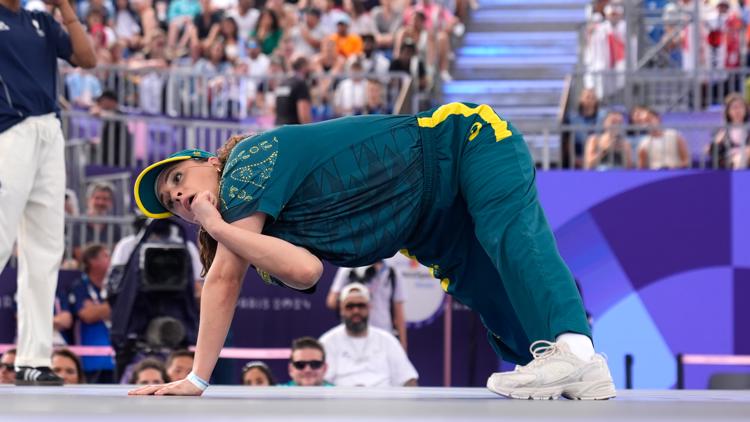The Controversy Surrounding Breaking’s Olympic Debut

In a surprising turn of events, breaking made its Olympic debut at the Paris Games, sparking a debate about the essence of this hip-hop art form. Many feared that the subculture of breaking, deeply rooted in local communities, would be co-opted, commercialized, and subjected to a rigid judging structure, straying far from its authentic origins.
Rachael Gunn, also known as “b-girl Raygun,” a 36-year-old professor from Sydney, Australia, became an internet sensation with her unconventional dance moves, including the infamous “kangaroo” move. Despite her creative approach, she failed to match the skill level of her competitors and was quickly eliminated from the competition.
Similarly, Lithuania’s silver medalist b-girl Nicka faced criticism for wearing a durag, a symbol of Black pride in hip-hop culture, despite not being Black herself. This raised concerns about cultural appropriation and representation in the breaking community.
Preserving Breaking’s Roots
The introduction of breaking at the Olympics challenged organizers to bring this underground art form to a mass audience while staying true to its roots. The spirit of breaking, born in Black and brown communities in the Bronx, was a form of empowerment and resistance against socio-economic struggles, making its representation on a global stage a delicate balance.
Despite the controversies and challenges, breaking at the Olympics continues to evolve, with OGs like b-girl Talash making personal statements and pushing boundaries. The American b-girls may have been eliminated, but the b-boys are set to take the stage, representing the next chapter in the journey of breaking’s Olympic legacy.
As the debate continues, hip-hop legends like Snoop Dogg and ICE T express their support for breaking, acknowledging its cultural significance and impact. The future of breaking at the Olympics remains uncertain, but one thing is clear: the art form’s heritage and authenticity will always be at the heart of the discussion.




